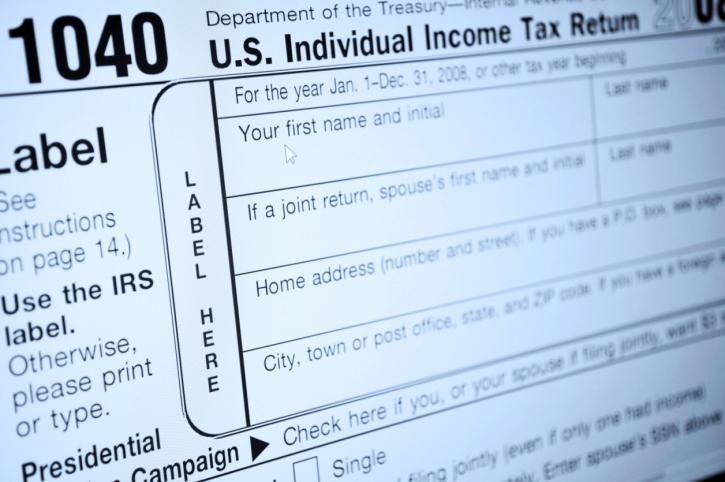Taxes are due Tuesday, as the IRS collects tens of millions of forms from around the country. Most individual taxpayers fill out a Form 1040, and then attach a series of additional Schedules (A, B, C, D, or SE) to their packets. Why are some tax forms called “schedules”?
Blame the Brits. The word derives from the Middle English cedule or sedule, and originally referred to a written document, usually a scroll or slip of parchment. There’s also a more specific meaning for schedule that goes back hundreds of years: A supplementary or explanatory form attached to a document such as a will or deed. When the British Parliament enacted its first income tax in 1799 to help pay for a war with France, citizens’ earnings from various sources were entered onto lettered schedules. Schedule A, for example, would be for income from owning property, while Schedule E detailed salaries and pensions. This “schedular system” of taxation, with different rates applied to different types of income, can be distinguished from a “global system” in which only one tax rate applies. When the U.S. enacted its own income tax for the first time in 1862, Congress adopted the schedular system, and the schedules that went with it.
The first federal income tax in the United States was repealed in 1872 and then reinstated on a permanent basis in 1913. The new version asked citizens to report their own earnings on a set of forms supplied by the government, including the familiar “1040.” It’s not clear whether schedules, described as such, were used from 1913. Available records do show that by 1917 at the very latest, the government was distributing tax forms with separate areas marked off as “Schedule I,” “Schedule II,” “Schedule A,” “Schedule B,” etc. The nomenclature has apparently been in use ever since.
With the exception of our annual taxes—and some other government documents, like the categorization of drugs according to their potential for abuse (as in “Schedule I Controlled Substances”)—we now use the word schedule almost exclusively as a way of charting time. That’s an Americanism from the mid-1800s having to do with the country’s railroads. Printed leaflets describing the planned arrival and departure of trains were described as schedules at least as far back as the time of the Civil War-era income tax. By the turn of the 20th century, the word had come to refer to other forms of timekeeping as well and eventually began to be used as a verb (as in, let’s schedule an appointment). Nowadays, Americans use other terms—such as rider or attachment—to describe what used to be known as a schedule.
Got a question about today’s news? Ask the Explainer.
Explainer thanks Ajay Mehrotra of Indiana University at Bloomington, Joseph J. Thorndike of the Tax History Project at Tax Analysts, and Ben Zimmer of the American Dialect Society. Thanks also to reader Dan Barron for asking the question.
